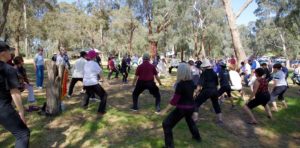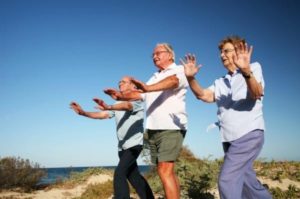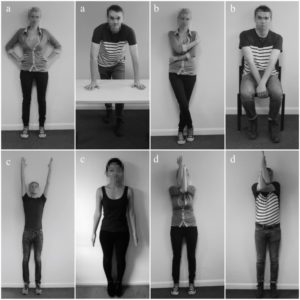
Improve Anxiety in Adolescents with Mindfulness
By John M. de Castro, Ph.D.
“Mindfulness also helps us to get to know our real self which is never a bad thing! People suffering from social anxiety are often marred by an exaggerated perception of their shortcomings which leads them to believe that they are inadequate and that everybody must be noticing. Practicing mindfulness based cognitive therapy will help them to reestablish a more realistic self-image.” – Kyle MacDonald
Anxiety disorders are the most common mental illness in the United States, affecting 40 million adults, or 18% of the population. Anxiety Disorders affects about 3.1% of the U.S. population. Severe anxiety affects about 6% of adolescents. Physically, anxiety sufferers will often show excessive fatigue, irritability, muscle tension or muscle aches, trembling, feeling twitchy, being easily startled, trouble sleeping, sweating, nausea, diarrhea or irritable bowel syndrome, and headaches.
Anxiety disorders in adults have generally been treated with drugs. It has been estimated that 11% of women in the U.S. are taking anti-anxiety medications. But, there are considerable side effects and these drugs are often abused. The drugs are also not appropriate for children and adolescents with developing nervous systems. So, there is a need to develop alternative treatments. Recently, it has been found that mindfulness training can be effective for anxiety disorders. Mindfulness-Based Cognitive Therapy (MBCT) has been shown to be effective in treating anxiety in adults. Mindfulness training has also been shown to produce changes in the nervous system. It is not known, however, what changes in the nervous system underlie the effect of MBCT on anxiety.
In today’s Research News article “Neural Function Before and After Mindfulness-Based Cognitive Therapy in Anxious Adolescents at Risk for Developing Bipolar Disorder.” See summary below or view the full text of the study at: https://www.ncbi.nlm.nih.gov/pmc/articles/PMC4876535/, Strawn and colleagues examine the effects of Mindfulness-Based Cognitive Therapy (MBCT) on the nervous systems of youth with high levels of anxiety. They recruited children and adolescents, aged 9 to 16 years, who were diagnosed with an anxiety disorder and who were at risk for developing bipolar disorder. They were treated with a 12-week program of MBCT. Before and after the treatment they were measured for anxiety, clinical symptoms, and mindfulness and also underwent functional Magnetic Resonance (f-MRI) brain scans while performing a continuous processing task with emotional and neutral distractors.
They found that following MBCT there was a significant increase in activity of the insula, lentiform nucleus, and thalamus, and anterior cingulate cortex with the presentation of emotional pictures. So, MBCT produces changes in the brains of children and adolescents similar to those seen in adults. They also found that the greater the reduction in anxiety resulting from MBCT the greater the decrease in activity of the insula and anterior cingulate cortex.
The insula and the anterior cingulate cortex have been shown to be involved in emotional processing and MBCT is aimed at altering the thought processes revolving around the interpretations of emotions. So, the changes in the functional activity of these structures following MBCT are commensurate with the changes in emotionality. Hence, MBCT appears to change the brains of children and adolescents with anxiety disorders to improve emotional processing.
It should be noted that this was a pilot study with a very small number of participants and no control group. So, the findings must be interpreted with caution. But the findings are sufficiently interesting to justify conducting a larger randomized clinical trial in the future.
“If you have unproductive worries, you can train yourself to experience those thoughts completely differently. ‘You might think ‘I’m late, I might lose my job if I don’t get there on time, and it will be a disaster!’ Mindfulness teaches you to recognize, ‘Oh, there’s that thought again. I’ve been here before. But it’s just that—a thought, and not a part of my core self,‘” – Elizabeth Hoge
CMCS – Center for Mindfulness and Contemplative Studies
This and other Contemplative Studies posts are also available on Google+ https://plus.google.com/106784388191201299496/posts and on Twitter @MindfulResearch
Study Summary
Strawn, J. R., Cotton, S., Luberto, C. M., Patino, L. R., Stahl, L. A., Weber, W. A., … DelBello, M. P. (2016). Neural Function Before and After Mindfulness-Based Cognitive Therapy in Anxious Adolescents at Risk for Developing Bipolar Disorder. Journal of Child and Adolescent Psychopharmacology, 26(4), 372–379. http://doi.org/10.1089/cap.2015.0054
Abstract
Objective: We sought to evaluate the neurophysiology of mindfulness-based cognitive therapy for children (MBCT-C) in youth with generalized, social, and/or separation anxiety disorder who were at risk for developing bipolar disorder.
Methods: Nine youth (mean age: 13 ± 2 years) with a generalized, social, and/or separation anxiety disorder and a parent with bipolar disorder completed functional magnetic resonance imaging (fMRI) while performing a continuous processing task with emotional and neutral distractors (CPT-END) prior to and following 12 weeks of MBCT-C.
Results: MBCT-C was associated with increases in activation of the bilateral insula, lentiform nucleus, and thalamus, as well as the left anterior cingulate while viewing emotional stimuli during the CPT-END, and decreases in anxiety were correlated with change in activation in the bilateral insula and anterior cingulate during the viewing of emotional stimuli (p < 0.05, uncorrected; p < 0.005 corrected; cluster size, 37 voxels).
Conclusions: MBCT-C treatment in anxious youth with a familial history of bipolar disorder is associated with increased activation of brain structures that subserve interoception and the processing of internal stimuli—functions that are ostensibly improved by this treatment.








